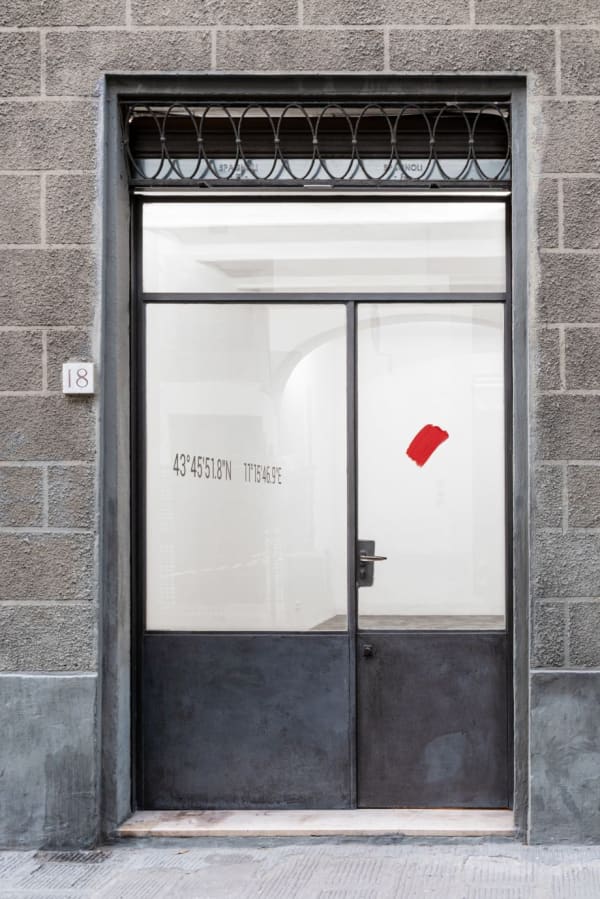Base / Progetti per l'arte presents the exhibition entitled 43°45'51.8″N 11°15'46.8″E that Karin Sander, an artist who has been proposing a conceptual reflection on the nature of the work of art since the 1990s, has specially conceived for the non-profit space in Florence. The exhibition investigates the relationship between the exhibition venue, the work of art and the public at the time of Google Maps and other digital and global social media.
Karin Sander's project for Base consists of visualising the three tools or three typical gestures that the digital user makes in order to search for a place and go there: the geolocation coordinates of the destination, the pointer that fixes the place in Google maps, the trace of the fingertip on the touch screen. At the same time, with an alienating approach, the artist visualises these elements in the physical space using the mediums adopted by the process art of the 1970s, ranging from pre-spaced lettering on the wall to coloured neon tubes, to the pictorial intervention aimed at marking out and transforming a perimeter of the architecture. Her intention is not to create a cold list of the means of art or of moving through reality by means of virtual coordinates, but to recall that these elements are not the end but the starting point for a process that leads to something else. It is this other that you evoke with this exhibition and your reflection on the role of art and the spectator in comparison with the current global and post-internet era. It is the same way that makes the artist say: I must be able to work using resources that actually exist, that are already present within the system, and that can set the system against itself and that, in 1997 for Skulptur Projekte, led her to highlight the real centre, geometric and geographical, of the city of Münster with a circular red concrete base highlighting both an area that went unnoticed and the relationship between scientific, historical, economic and identity factors with which to objectively detect the centre (in that case distant from the commonly understood "city centre").



